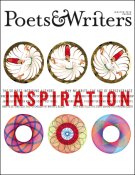It may not have been The Year Print Died, but 2009 will undoubtedly go down as the year digital literature became impossible to ignore. From celebrity authors' crowdsourcing stories through Twitter, to the proliferation of online publishing platforms, to the bruiting discord over the Google Book Search settlement, something new is plainly afoot in the publishing world, even if the ramifications for writers are still more a matter of conjecture than measurement. One trend is clear: The nascent e-book market has been outpacing its hard-copy counterpart for some time and shows every indication of accelerating. As of this writing, the Association of American Publishers reports a 177.3 percent increase in digital-book sales over the first eight months of 2009—and that's on top of a 68.4 percent jump recorded the year before.
A poll at the 2009 Frankfurt Book Fair showed that almost 80 percent of publishers agreed that digital titles should be less expensive than their printed counterparts.
Among the more visible signs of a shift is the clutch of electronic reading devices suddenly clamoring for consumer attention. Samsung (Papyrus), Elonex (eBook), iRex (Digital Reader), and Barnes & Noble (Nook) all debuted e-readers in the second half of 2009, while Sony—a player since the medium's early days—revamped its existing lineup of Readers. From its introduction in 2007, the one to beat has been Amazon's Kindle, which lately boasts international wireless functionality. The Seattle-based online retailer is notoriously tight lipped when it comes to sales figures (CEO Jeff Bezos has even gone on record saying the company may never divulge its Kindle stats), but a fall 2009 report by Forrester Research put Amazon's share of the e-reader market at 60 percent. The same study—which boosted estimates issued just five months earlier by 50 percent—pegged U.S. e-reader sales last year at three million units, a number that's expected to double in 2010. Small wonder, then, that by late October both Amazon and Barnes & Noble had declared their respective e-readers the best-selling items in their catalogues.
Far harder to quantify are the effects of the e-book explosion on literary culture. According to the New York Times, Amazon says that Kindle owners buy slightly over three times as many books as they did before purchasing the device, and Sony claims that its customers download an average of eight e-books a month. For titles offered by Amazon in both print and digital formats, Kindle editions reportedly now account for nearly half of sales. While increased book buying might sound like a good thing, the dubious logic that treats print and electronic literature as equivalent has translated this latest trend into a decidedly inauspicious prospect for bricks-and-mortar booksellers. Despite efforts by Barnes & Noble to keep its e-reader customers coming into stores—including specially designed "Nook areas" and free on-site Wi-Fi—analysts responded to the new device by promptly downgrading the company's stock. "As the math currently works," wrote Credit Suisse analyst Gary Balter, "each sale through a Nook is not just unprofitable but potentially replaces a higher-margin sale at stores."
But the old and new formats clearly aren't interchangeable to consumers. For one thing, readers expect to pay far less—if anything at all—for digital books. A British YouGov survey in October found that while only 4 percent of respondents had read an e-book that month, a solid 70 percent of that group had obtained the work (whether legally or not) for free.
Publishers seem to understand this—at least in principle. A poll at the 2009 Frankfurt Book Fair—the world's largest international gathering of industry professionals—showed that almost 80 percent of publishers agreed that digital titles should be less expensive than their printed counterparts, although they remained "completely divided" over just how much cheaper. Of particular concern is the fact that Amazon and its ilk have reportedly been paying publishers the traditional print rate (usually half the cover price) for each e-book sale, patiently operating at a loss while sweeping up valuable market share. As these vendors increase their clout, publishers are worried that wholesale prices will be forced down, eating away at their margins.
One predictable response is to squeeze the writer. In October, Macmillan drew the ire of agents and authors groups—who have become increasingly insistent that the comparative cheapness of digital publishing entitles writers to a bigger piece of the pie—when it dropped its royalty rate on e-books by 5 percentage points. Another response is simply to delay the electronic release of lucrative books in order to wring maximal gain from hardcover editions, as several publishers did last season with celebrity-authored titles.
But these are symptoms rather than solutions. Realistic long-term strategies for writers, as well as publishers, will depend on recognizing that digital books, while they won't be replacing print any time soon, have finally become the standard of exchange in the publishing world.
Adrian Versteegh is the editorial director of Anamesa. He lives in New York City.






